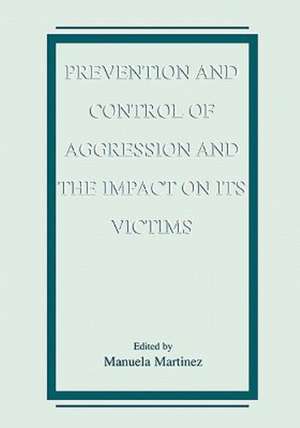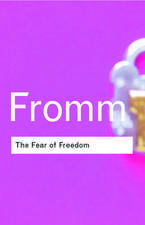Prevention and Control of Aggression and the Impact on its Victims
Editat de Manuela Bachen Limba Engleză Paperback – dec 2010
Aggression is an aspect of human society that has interested scientists for many decades, and their work has provided important knowledge about its causes and way to prevent and control this behavior. However, not only scientists but many professionals working in the wide spectrum of society, from family to international policy, are interested in having programs of interventions capable of reducing aggression and violence in our society.
This comprehensive book is a compendium of most research approaches that are currently taking place in the field of aggression, focusing on the interventions to control and prevent this behavior and the impact on its victims. The chapters of the book include biological approaches to aggression, such as neuroanatomy, neurochemistry, neuroendocrinology, genetics and psychopathology; information about aggression in children and adolescents in different settings such as family, school and community; characteristics if aggression in specific relationships such as marital and sexual, and specific settings such as bars, prisons and traffic; and cultural approaches to aggression, social prejudice, war and programs of peace. Furthermore, a small number of representative chapters about victims are included, ranging from the impact of aggression on behavior and physiology in animal models to victims of war.
As this book highlights, the interventions to prevent and control aggression have to be diverse (highly heterogenic) in order to deal with all aspects of human beings and society, ranging from pharmacological control in individuals to programs of peace to promote respect among people and among nations.
Scientists, academics and professionals dealing with any facet of aggression and its impact on our society will obtain in this book information about the complexity of this research field and the ways to approach our objective: eliminate aggression from the human behavioral repertoire.
| Toate formatele și edițiile | Preț | Express |
|---|---|---|
| Paperback (1) | 654.43 lei 6-8 săpt. | |
| Springer Us – dec 2010 | 654.43 lei 6-8 săpt. | |
| Hardback (1) | 662.80 lei 6-8 săpt. | |
| Springer Us – 31 dec 2001 | 662.80 lei 6-8 săpt. |
Preț: 654.43 lei
Preț vechi: 769.92 lei
-15% Nou
Puncte Express: 982
Preț estimativ în valută:
125.23€ • 133.91$ • 104.41£
125.23€ • 133.91$ • 104.41£
Carte tipărită la comandă
Livrare economică 17 aprilie-01 mai
Preluare comenzi: 021 569.72.76
Specificații
ISBN-13: 9781441933669
ISBN-10: 1441933662
Pagini: 472
Ilustrații: XIV, 452 p.
Dimensiuni: 127 x 203 x 25 mm
Greutate: 0.81 kg
Ediția:Softcover reprint of the original 1st ed. 2001
Editura: Springer Us
Colecția Springer
Locul publicării:New York, NY, United States
ISBN-10: 1441933662
Pagini: 472
Ilustrații: XIV, 452 p.
Dimensiuni: 127 x 203 x 25 mm
Greutate: 0.81 kg
Ediția:Softcover reprint of the original 1st ed. 2001
Editura: Springer Us
Colecția Springer
Locul publicării:New York, NY, United States
Public țintă
ResearchCuprins
Sensible or senseless violence from the brain: Role of the hypothalamus in violence.- Effects of 5-HT and GABA agents on aggressive responding of adult men with a history of childhood conduct disorder.- Biochemical and molecular genetic factors in habitual violence and antisocial alcoholism: Control and preventive interventions.- The role of serotonin in the modulation of aggression: Studies using tryptophan manipulation.- Changes in brain monoaminergic systems in apomorphine-sensitized aggressive male Wistar rats.- Stress hormones and aggression. Animal models of human pathologies.- Testosterone and aggression in male and female preschool children.- The genetics of aggression: From mice to humans.- Neuroimaging in human aggression: Conceptual and methodological issues.- The Report Form for Aggressive Episodes (REFA) in the treatment of violent psychotic patients.- Sleep pathology and antisocial behavior: A need for research.- Treatment of borderline personality disorder: Reducing self-aggression.- Complexity in the causal pathways of aggression in children: A rationale for treatment.- Prevention of antisocial behavior in high-risk boys: The Montreal longitudinal and experimental study.- The relationship between playing violent electronic games and aggression in adolescents.- Changes in school playground to reduce aggressive behaviour.- Aggression, friendship and reconciliation in primary school children.- Peer bullying in Spanish secondary schools: A national scale study for the Ombudsman’s Report on school violence.- A script-cartoon narrative of bullying in children and adolescents: A researchtool to assess cognitions, emotions and coping strategies in bullying situations.- Stress management and reduction of aggression in grade school children.- The effects of exposure to chronic community violence on preschool behavior.- Physical aggression in the family: Prevalence rates, links to non-family violence, and implications for primary prevention ofsocietal violence.- Parenting-styles, self-control and male juvenile delinquency: The mediating role of self-control.- The role of third parties in conflicts among Colombian preadolescents.- Global perspectives on wife beating and health care.- Post-separation violence: The male perspective.- Males acquaintance rape proclivity: A multivariate approach.- Perceptions of forced sex. What determines how men label it?.- Men’s judgments of a sexual assailant in an eroticized rape: The role of rape myth attitudes and contextual factors.- A longitudinal perspective on women’s risk perception for sexual assault.- Risk factors of sexual victimisation: Exploring parallels between women and homosexual men.- Riskier lifestyle, aggression, and public drinking: Findings from a general population of adults in the United States.- Prediction of bar violence among young adults.- Bullying behavior among prisoners: A study conducted among Pakistani female offenders.- Reduction of stress by relaxation techniques: Their possible use in the reduction of aggression.- Aggression and violence among drivers: Comparison between professional and non-professional drivers.- From a culture of war and violence to a culture of peace and non-violence.- Aggression prevention in cross-cultural perspective: From Finns to Zapotecs.- Why is war acceptable?.- Making the world more peaceful: Policy implications of cross-cultural research.- Developing alternatives to war: Insights from anthropological research.- Ethnic diversity and the interaction of social prejudice and aggression.- Modifying aggression and social prejudice: Findings and challenges.- The centrality of intention in the social representation of aggression.- Physical, verbal, and indirect aggression among Hindu, Muslim, and Sikh adolescents in India.- Attitude toward offenders scale: Assessment, validation and research.- Paradoxical reactions of property crime victims.- Victims of war: Psychological problems of displaced people.Psychosocial intervention.- Dynamic brain receptor changes in the victims of aggression: Subordination stress alters brain alpha2-adrenoceptors.- The impact of social conflict on cardiac activity: Indications from studies in wild-type rats.- Aggression and dominance in tree shrews (Tupaia belangeri): Agonistic behaviour is reflected in vocal patterns.- Behavioral changes in male rats exposed to repeated aggression.- Contributors.














